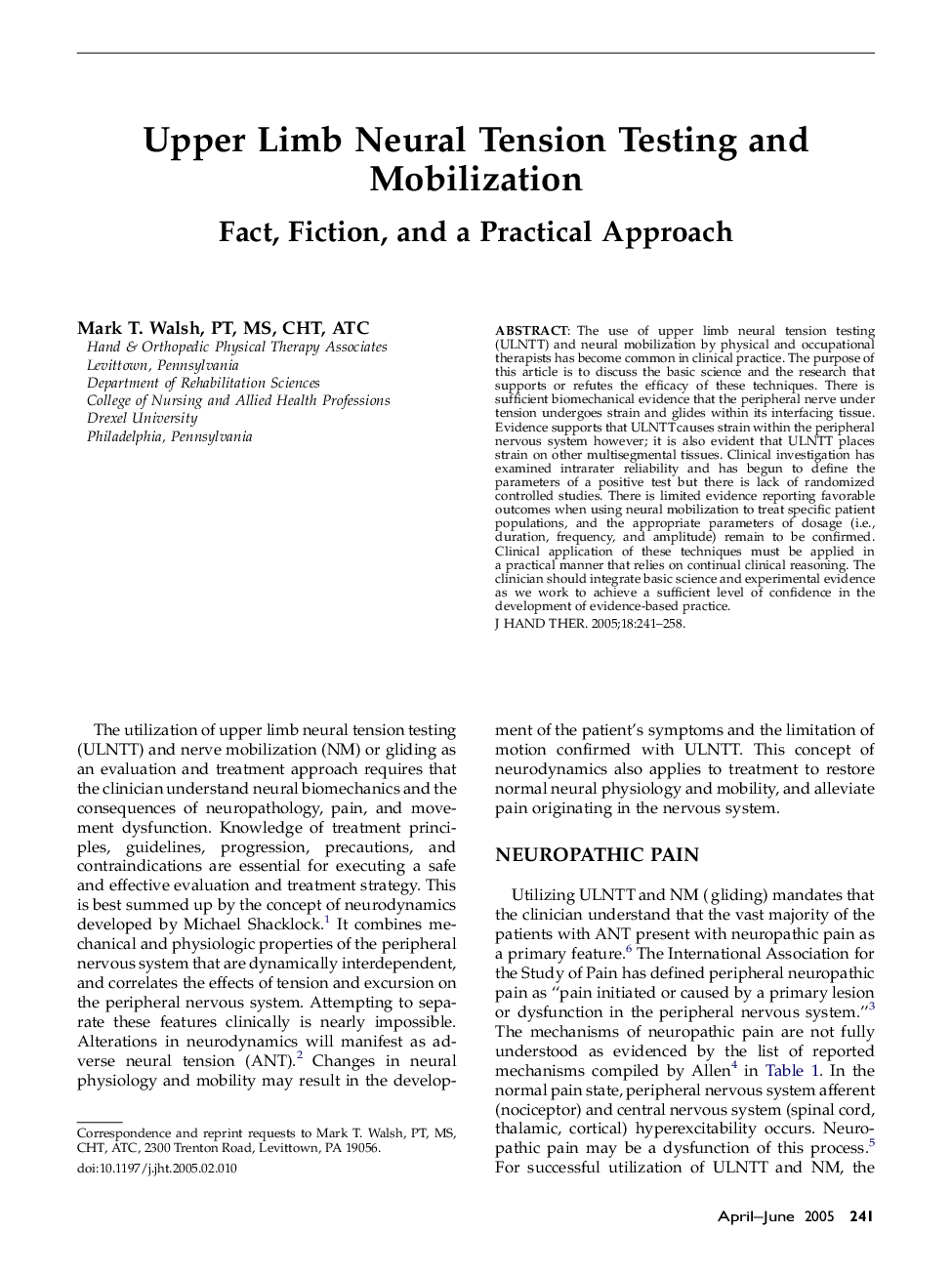| Article ID | Journal | Published Year | Pages | File Type |
|---|---|---|---|---|
| 9075139 | Journal of Hand Therapy | 2005 | 18 Pages |
Abstract
The use of upper limb neural tension testing (ULNTT) and neural mobilization by physical and occupational therapists has become common in clinical practice. The purpose of this article is to discuss the basic science and the research that supports or refutes the efficacy of these techniques. There is sufficient biomechanical evidence that the peripheral nerve under tension undergoes strain and glides within its interfacing tissue. Evidence supports that ULNTT causes strain within the peripheral nervous system however; it is also evident that ULNTT places strain on other multisegmental tissues. Clinical investigation has examined intrarater reliability and has begun to define the parameters of a positive test but there is lack of randomized controlled studies. There is limited evidence reporting favorable outcomes when using neural mobilization to treat specific patient populations, and the appropriate parameters of dosage (i.e., duration, frequency, and amplitude) remain to be confirmed. Clinical application of these techniques must be applied in a practical manner that relies on continual clinical reasoning. The clinician should integrate basic science and experimental evidence as we work to achieve a sufficient level of confidence in the development of evidence-based practice.
Related Topics
Health Sciences
Medicine and Dentistry
Orthopedics, Sports Medicine and Rehabilitation
Authors
Mark T. PT, MS, CHT, ATC,
